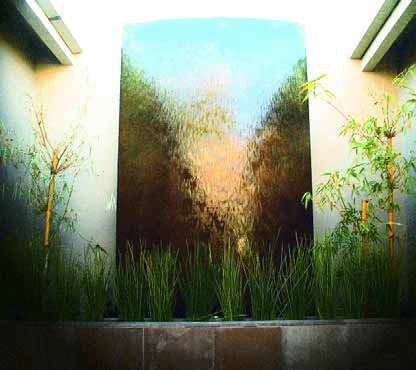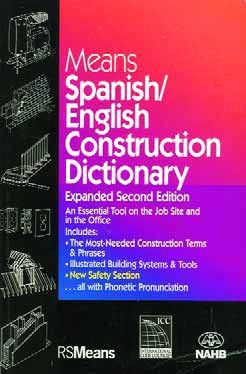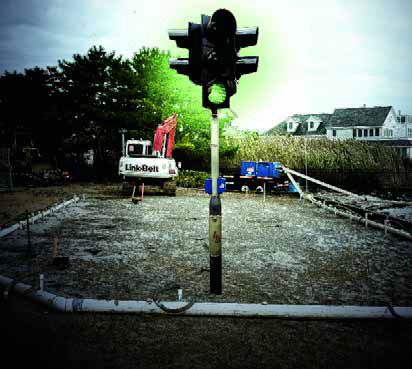communication
Many watershapers have a single-minded focus, doing all they can to deliver quality shells and surrounding decks to their clients. Quite often, however, that narrow focus means that inadequate space is left for planting - a problem I face quite often as a landshaper. It's clear in many cases that no thought at all was given to the landscape - and certain that no design professional was consulted before laying out and installing the hardscape. The result all too often is that there simply isn't enough room to allow for good-size planter beds. I often find myself rolling my eyes and lamenting the missed opportunities to
It's a plain fact: In many regions of the United States these days, the vast majority of construction laborers speak Spanish. That's a big deal because, as watershapers, it is our responsibility to convey the design mission for our projects as well as all-important client wishes to these talented craftspeople - not to mention the basic, general communications that come with managing the work of individuals and small groups of people. Where I work in Texas, this is the simple reality - and I know it's true as well in California, Arizona, Florida, Nevada and many other parts of the country. As a consequence, I think it makes sense for those responsible for guiding the overall efforts of these workers to be able to communicate with them in their own language. After all, these are the folks who are installing the details we've so carefully designed and engineered. For my part, I'm trying to elevate my communications skills by
With few exceptions, the most satisfying projects we've undertaken through the years have come when our company has gotten involved with talented architects or landscape architects - and sometimes both - as part of larger project teams. We embrace this sort of work and enjoy taking a role as a resource for other professionals. Through the years, in fact, these collaborations have developed to a point where many of those we work with will automatically call us whenever one of their projects includes any sort of
When I paint, I constantly play with color on canvas and experiment with various combinations to see what works well and discover what, to my eye, clashes or doesn't seem to mix harmoniously. As a landscape designer, I'm aware of working through the same sort of process when I discuss color with clients - determining their likes and dislikes and narrowing the color palette down to those hues, values and intensities that are most appealing to them. Some aren't even aware until I launch into a discussion with them that they have particular tastes involving the color wheel. In my experience, all these clients lean
For years now, I've listened to people gripe about trade shows - how dull they are and why attending them is such a colossal waste of time. It's gotten to a point where it's almost fashionable to take these shots, and I hear them not just about the pool shows with which I'm vastly familiar, but also about the landscape shows of which I've attended just a few. Actually, I've been attending trade shows for longer than I care to remember. Although just about every one of them managed to include some useful or positive experience, there's no question that I've approached them with diminishing enthusiasm through the years. I've never given up on them entirely, but I know a great many people who
For many years, I sat on the sidelines and watched others learn to use CAD to their professional advantage. I'm a fine artist by background and training and have always had great confidence in my ability to draw freehand. But I also yearned to become proficient with computers because I was convinced they'd streamline my work, offer me additional tools that would facilitate expansion of my business and, overall, make me a better landscape architect. I was completely
When someone calls and asks you to "landscape my home," what does it mean? Are you going over to put plants and trees in the ground, or will you be rolling in with backhoes to install a pond? This initial uncertainty is why, before any project begins in earnest, there are questions to be asked. It's also why there are measurements to be taken, elevations to be shot, sketches and more sketches to be drawn, meetings to schedule and plans to present. Then, maybe, a working design will develop and then, maybe, construction will start. Gathering information and doing the foundation work on a design takes research, patience, experience and time, and it's never
In the design and construction of any watershape, there are a number of points in the process where you can see big differences between the way custom designers and contractors do things and the way production/volume-oriented companies go about their business. From first conversations with clients straight through to commissioning the system and turning it over to the homeowners, it's easy to spot these distinctions and define key differences. To illustrate just one of these areas, let me discuss the case of the permitting phase for the project on Long Beach Island, N.J., I began covering two issues ago. What's involved here is a cluster of issues that occurred more or less simultaneously in the project's early going. The elements of this cluster may not seem directly related to one another, but






















